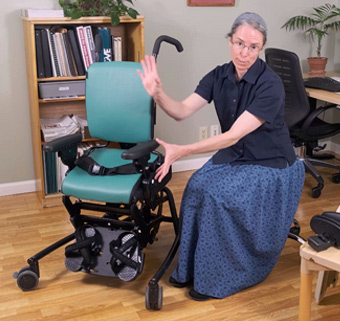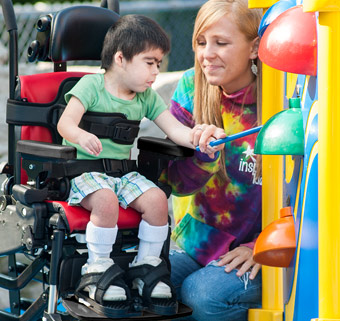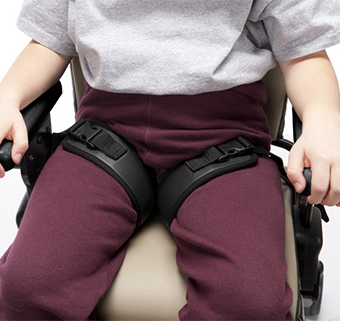Anchors: A Way to Increase Independence
| June 2013 Rifton’s Anchor family is more than a collection of suction cup grab bars and hand grips. The Anchor family is a set of distal arm stabilizers that enhance proximal stability of head, shoulder, trunk and pelvis. In essence, they assist students and young adults in becoming more independent in the classroom, community and home.
Rifton’s Anchor family is more than a collection of suction cup grab bars and hand grips. The Anchor family is a set of distal arm stabilizers that enhance proximal stability of head, shoulder, trunk and pelvis. In essence, they assist students and young adults in becoming more independent in the classroom, community and home.
Previously, a hierarchical development theory emphasized working on proximal head, shoulder and pelvic control first. Now we know that distal stability of the hands and feet can help improve the functioning of these core muscles as well. An arm anchor provides this distal stability and can be a necessary piece of adaptive equipment for a student in the classroom.
 Gavin, a student with spastic cerebral palsy in a regular classroom, could suddenly have a bodily spasm and his arms would flail in all directions. Aside from disrupting the class, he would feel embarrassed by the uncontrolled movements of his limbs. We gave him the hand anchor to use on his wheelchair tray. He was able to hold the anchor during his spasms and in this way calm his body’s reactions. He no longer needed assistance to refocus himself after an incident and he was able to be an active participant in the classroom.
Gavin, a student with spastic cerebral palsy in a regular classroom, could suddenly have a bodily spasm and his arms would flail in all directions. Aside from disrupting the class, he would feel embarrassed by the uncontrolled movements of his limbs. We gave him the hand anchor to use on his wheelchair tray. He was able to hold the anchor during his spasms and in this way calm his body’s reactions. He no longer needed assistance to refocus himself after an incident and he was able to be an active participant in the classroom.
Students or young adults with hemiplegia may hold their affected limb in a “high guard” position as they move and reach out with the other limb. This position hampers the development of more dynamic shoulder and trunk movements. Anchoring the affected side provides the stability needed to facilitate normal movement and prevents the body from drifting into asymmetrical compensatory patterns.
Take for example Heather, a young adult with spastic hemiplegia. Heather uses the wrist Anchor for mealtimes. The wrist anchor stabilizes the affected hand in a natural position on the cafeteria table. This in turn keeps her trunk and head in better alignment. She no longer needs to concentrate on sitting while eating and no longer needs an aide to reposition her during the meal. Instead she socializes with her peers.
As parents, caregivers and therapists our goal is to improve functional ability in the lives of individuals with disabilities. The Rifton Anchors, small and insignificant as they may appear, can make a big difference in improving functional performance in the classroom, community and home.
Diane McCormack is a pediatric OT in private practice in Detroit Lakes, Minnesota. She is co-author with Dr. Kathy Riske Perrin, OTR, of the book Spatial,Temporal and Physical Analysis of Motor Control (Therapy Skill Builders) and article contributor to “How Can I Get that Arm Straight? The Quest for Elbow Extension” in Parent Articles about NDT (Therapy Skill Builders).




